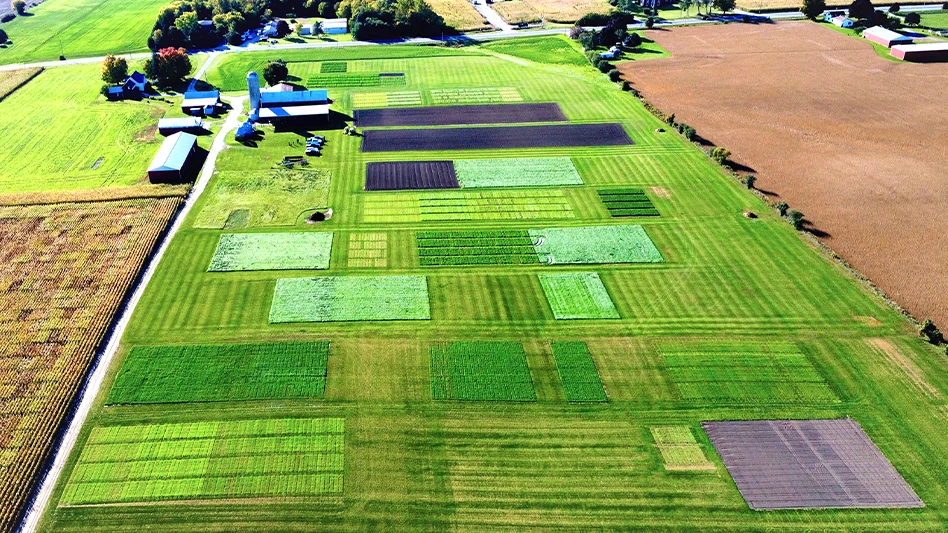
Spring is the time to recover from Mother Nature’s deep freeze and prep the course for months of play to come. You’d be surprised the potential issues awaiting beneath the earth’s surface once it’s time to flip on the irrigation system.
The course’s irrigation heads should be checked for proper operation in the spring, says Brian E. Vinchesi of Irrigation Consulting Inc. “You need to make sure all the sprinklers go on and off, pop up and down and most importantly – turn,” he says. “You should make sure the nozzle is still in them, but that will be pretty obvious.”
The exact timing of these checks depend on the geographic territory, says Steve Sakurai, national golf products sales manager for Ewing Irrigation and Landscape Supply. “Typically, the best time is about one week before you start needing to use your irrigation system,” he says. “If you live in an area that requires you to blow out your system for winter, the best time would be when it’s time to recharge your irrigation system.”
However, there is a proactive approach to checking for possible issues and failures, says Ian Williams, national specification manager at Rain Bird Golf. “You may not need to necessarily wait until after winter has ended,” he says. “Some systems allow for ‘electrical’ checks of the sprinkler heads during winter months without the need for pressurized water in the lines. Feedback from the sprinkler allows you to verify that the sprinkler head is communicating, able to receive commands and operate even prior to spring operation.”

Williams refers to the company’s Integrated Control (IC) System to reinforce his point. “With a status poll and an internal voltage measurement test of the ICM, the operator knows the ‘electrical’ status of every sprinkler head and valve on the property even before spring start-up,” he says. “This is also a good opportunity to log module voltages so that comparisons can be made over time as a preventative measure to detect any developing wire or splice issues before they affect sprinkler head operation.
“During winter months, you can also perform electrical tests on sprinkler head operation from a PAR+ES satellite controller,” he adds. “At spring start-up, while the lines are being slowly pressurized, it is important to exhaust as much air from the pipes through quick coupler valves and air relief valves at high points. Pump station aside, this is also a good opportunity to check operation of the air relief valves, isolation valves and inspect for any pipe failures that may be present. Once this equipment has been verified, each sprinkler can then be operated hydraulically verifying proper operation, while also checking for correct nozzle selection and arc adjustment.”
As for the most efficient and effective way to check, Williams suggests taking a systematic approach to operating all sprinklers throughout the system by area and hole. This ensures no sprinklers are missed.
“This procedure also pushes any remaining air out of the lines,” he says. “Operating each sprinkler for a few seconds from a smart phone or tablet provides plenty of time to check rotation and arc adjustment while also inspecting for any damage that may have occurred over the winter months.”
The most effective way to check the irrigation system starts at the heart of the structure — the central control system, Sakurai says.
“First, you’ll want to do a communication check to see if there are any issues communicating to the controllers or decoders,” he says. “In areas where irrigation systems are blown out, you can do a check before the system is recharged. In areas where the pump station needs to be re-started, you should slowly charge the system and then look for breaks.”
Next, check the operation of each sprinkler head by verifying that they pop-up and rotate, Sakurai adds. “Check adjustments for part circles, and then check to make sure they turn off. Create a plan that starts at hole one, and then work your way throughout the golf course,” he says.
The most common issue is making sure the sprinklers are level and at grade, Vinchesi says.

Sprinkler head issues with rotors not coming on, not rotating or being out of adjustment are common issues that superintendents come across, Sakurai says.
Sakurai agrees with Vinchesi that a lot can be done in the fall to ensure less stress in the spring. “You can reduce the chance of springtime issues with your irrigation system by taking the time to start up your irrigation system to make sure it is running properly before you shut it down for the winter,” Sakurai says. “It is also important to make sure you properly winterize your irrigation system and clear any water out of the pipes.”
Assuming the system has been properly winterized, there is still plenty to do during the winter months to set yourself up for success in the spring, Sakurai says. For example, go through your inventory of parts to make sure you are prepared for any issues that may come up.
“Use any down time to clean up controllers,” he says. “Make sure the areas where the controllers are wired up are free of cobwebs, bugs, snakes, mice, spiders, etc.”
Next, make sure the data in the central control system is prepped correctly, including cleaning up data issues, or implementing updates.

Explore the April 2017 Issue
Check out more from this issue and find your next story to read.
Latest from Golf Course Industry
- The Fittest Podcast in Turf: Episode 1
- GCSAA announces Grassroots Ambassador Leadership Award recipients
- Reel Turf Techs: David Gummo
- PBI-Gordon promotes two to executive level
- VIDEO: A First Green morning
- Bloom Golf Partners adds HR expert
- Seeking sustainability in Vietnam
- Kerns featured in Envu root diseases webinar





